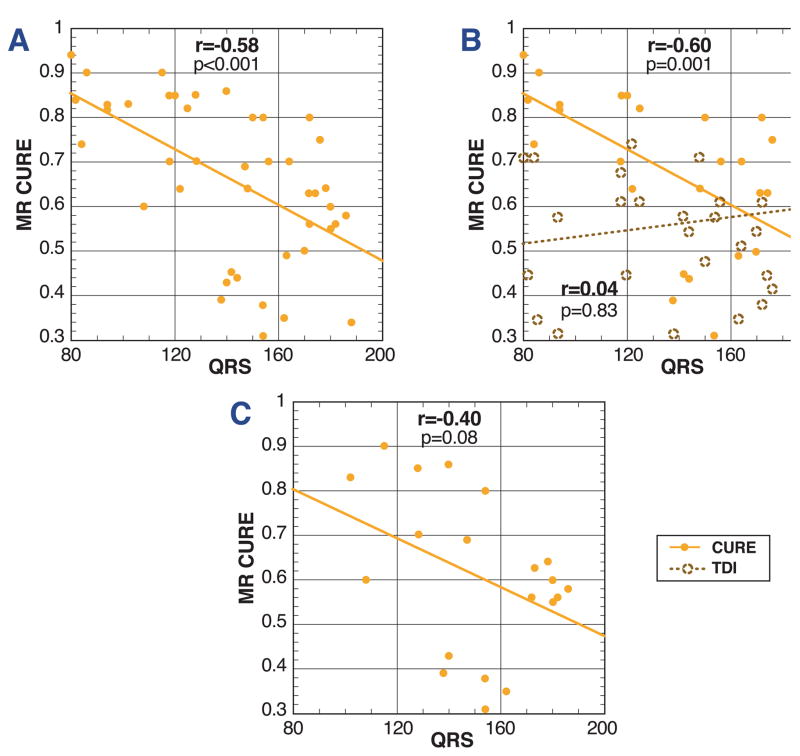Figure 3. Correlations for MR-MT circumferential dyssynchrony (CURE), TDI septal-lateral delay, and QRSd.
The modest correlation between CURE and QRSd is shown (r=−0.58, p<0.001) for all 43 subjects in the CRT-HF and multimodality cohorts (A). For the multimodality cohort only (B), CURE and the TDI septal-lateral delay are shown versus QRS duration. As expected (based on prior published data), there is no correlation between TDI and QRSd (r=0.04, p=0.83), but there is a significant correlation between CURE and QRSd (r=−0.60, p=0.001) (B). The CURE-QRSd correlation is also shown (C) for the CRT-HF cohort only (r=−0.40, p=0.08).

